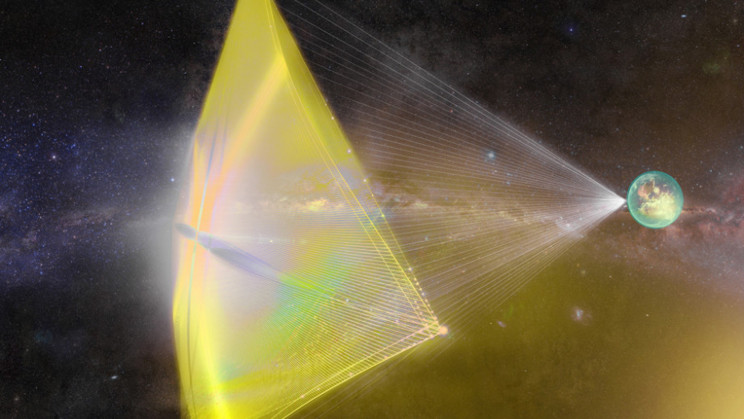Humanity’s history is a story of great leaps – across oceans, into the sky, and space. Humans have been sending their machines to planets, comets, and even intergalactic space ahead of them.
However, present rocket propulsion technology would take tens or hundreds of millennia to reach Alpha Centauri, our nearby star system. Human progress appears to be constrained by the stars. Until now! Breakthrough Starshot, an international research group, recently revealed its ambitions to launch a probe to Alpha Centauri.
However, to achieve this goal, it will need to design and test a new type of spacecraft propulsion system that involves a ground-based light beamer pushing ultra-light nano crafts with miniature space probes attached to lightsails – to achieve incredible speeds of up to 100 million miles per hour for interstellar travel within our lifespan.
Breakthrough Starshot’s ultra-lightweight spacecraft would allow a flyby mission to reach Alpha Centauri in just over 20 years from launch, beaming home images of its recently-discovered planet Proxima b, and any other planets that may lie in the system, as well as collecting other scientific data such as analysis of magnetic fields.
In its most recent study, the Australian National University (ANU) team aimed to make travel to Alpha Centauri a viable option. The team worked on a miniature probe with a lightsail powered by a laser array on Earth. The laser array will focus millions of beams on the sail throughout its interplanetary journey, allowing it to reach incredible speeds.
“To cover the vast distances between Alpha Centauri and our own solar system, we must think outside the box and forge a new way for interstellar space travel,” Dr. Bandutunga, from the Applied Metrology Laboratories at the ANU Centre for Gravitational Astrophysics, said.
“Once on its way, the sail will fly through the vacuum of space for 20 years before reaching its destination. During its flyby of Alpha Centauri, it will record images and scientific measurements that will broadcast back to Earth.”
To build their spacecraft, both Breakthrough Starshot and the ANU team rely on developing numerous fundamental technologies. Lightsails, for particular, were recently shown to be a viable mode of space travel. In 2019, LightSail 2 spacecraft used a lightsail, or solarsail, to successfully lift its orbital trajectory around Earth by 3.2 kilometers.
The biggest hurdle, though, will be the ANU team’s laser array concept, which will require millions of lasers to be precisely trained to work in harmony.
“The Breakthrough Starshot program estimates the total required optical power to be about 100 GW — about 100 times the capacity of the world’s largest battery today,” Dr. Ward, from the ANU Research School of Physics, says. “To achieve this, we estimate the number of lasers required to be approximately 100 million.”
The ANU team advises using a ‘guide laser’ satellite in Earth’s orbit as a conductor to maintain their lasers pointing precisely towards the lightsail during the journey. This will ensure that the entire laser array is aiming perfectly. This, in combination with an algorithm created to pre-correct the array’s light, will aid in accounting for the atmospheric distortion that the remaining Earth-bound lasers will face.
“The next step is to start testing some of the basic building blocks in a controlled laboratory setting. This includes the concepts for combining small arrays to make larger arrays and the atmospheric correction algorithms,” according to Dr. Bandutunga.
Breakthrough Starshot is one of Yuri Milner’s Breakthrough Initiatives, a collection of scientific and technological projects aimed at detecting life beyond our solar system. If lightsail technology becomes a thing, it could reach the planets that orbit Alpha Centauri, the star system that bears its name. If the initiative is successful, humans will be classified as an interstellar species.

